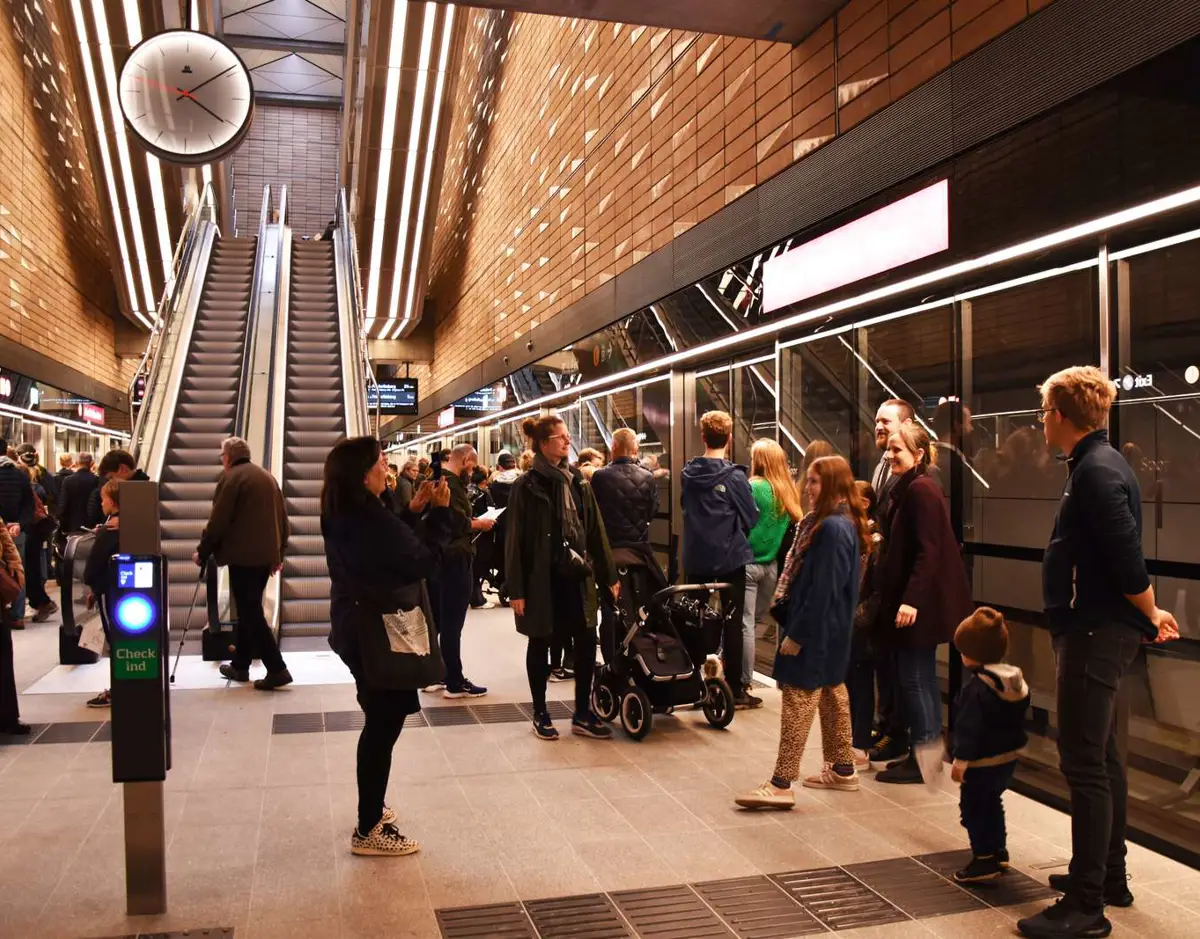
More than 4 million have travelled with the M3 line
Facts about the M3 line
- With the opening of the M3 line, nine out of the 10 most used stations in Denmark are expected to have a metro station.
- With the M3 line and the upcoming metro lines to Nordhavn (2020) and Sydhavn (2024), Copenhagen will have 24 new metro stations.
- From 2024, the capital will have 44 metro stations connecting large parts of the city.
- For the past three consecutive years, the Metro has run with an operational stability of 99.2 per cent, which means that approximately 12,900 of the 13,000 daily departures run on time.
- In the same three years, customer satisfaction with the journey has been measured at 96 per cent.
- During rush hour, there will be a maximum of three minutes between departures. Even at night, departures will be more frequent than in the existing Metro.
Metro passengers have welcomed the capital's newly opened Metro line. In October, more than 4 million people took advantage of the opportunity to get around the M3 line easier and faster. During the same period, service stability was 97.5 per cent, which means that approximately 333,200 of the approximately 341,760 departures in October were on time. On the M1/M2, 99.3 per cent of departures were on time.
‘The M3 line has got off to a good start and customers have responded very positively to the new metro line. Naturally, we're pleased with that. Operational stability has also been satisfactory in the first month, although there have been challenges as expected, including disruptions related to rail grinding. There will also continue to be disruptions to operations - especially when we shortly start testing the branch line from the M3 line to Nordhavn (M4), which will open in spring 2020’, says Henrik Plougmann Olsen, Chief Executive Officer (CEO) of Metroselskabet.
In October, the M1 and M2 metro lines set a passenger record with 6.3 million travellers. In the first month after the opening of the M3 line, the total passenger numbers for the entire Metro reached 10.4 million passengers, including those travelling between M1/M2 and M3.
However, the first month's passenger numbers cannot be used to conclude whether or not the M3 line is living up to expectations.
‘There have been an overwhelming number of passengers in the first month. More than expected. Many have probably been curious to see the new system. We know that customers only slowly adapt to the new opportunities offered by a new transport system. Therefore, it is only at a later stage that we will be able to say with any certainty whether the passenger numbers for the M3 line match our expectations. After the first month, all we can say is that interest in travelling with the new metro line has been great - and we hope this will continue,’ says Henrik Plougmann Olsen.
Although the overall operational stability of the M3 line has been at a satisfactory level in the first weeks after opening, customers have also experienced a few major service disruptions that have caused inconvenience for passengers, especially during the morning rush hour.
Metroselskabet will continue to focus on ensuring good and stable operations in the coming period and is working continuously and purposefully to prevent and limit the irregularities that will inevitably occur in the first months after the M3 line opens.
Among other things, part of the testing of the future M4 between Copenhagen Central Station and Nordhavn will affect the operation of the M3 line. The work will therefore be organised so that the test runs take place at night and some weekends to minimise disruption to passengers before they can also travel with the new M4 in early 2020.
Passenger development for the M3 line will be updated monthly on Metroselskabet's website www.m.dk. However, the passenger development should be seen in a longer time perspective, as there is great uncertainty about both the size and speed of the expected passenger recovery.
Once a year, an analysis of passenger development is prepared. This is expected to be published at the same time as Metroselskabet's annual report.